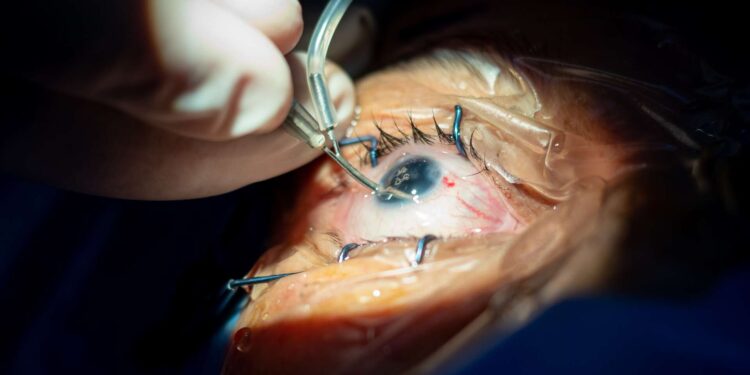Today in Weird patienta series of cases of extremely serious complications following eye tattoos.
Tattooing the sclera, the white part of our eyes, is a much more delicate body modification than tattooing the skin. Still poorly understood, the serious and impressive complications linked to this practice are increasingly numerous in the medical literature.
Impressive and serious complications
At 26, a Mexican man presented to the hospital with pain eyepieceseyepieces and loss of vision, four days after having his sclera tattooed with ink. He told ophthalmologists that he was injected with a mixture of green pigment,alcoholalcohol isopropyl,distilled waterdistilled water and of glyceringlycerin. This chemical cocktail transformed the patient’s eye tissue into a green “gelatin.” He was prescribed a course of antibiotics and corticosteroids to avoid a secondary bacterial infection and relieve his irritated eye. After 15 days of treatment, he regained a healthier appearance but the sclera was still green, the patient also regained part of his visual acuity.
This impressive case is not isolated. In 2017, a young woman rushed to the emergency room crying purple tears because of a sclera tattoo gone wrong. The same year, a 24-year-old patient required surgery because black tattoo ink was injected into the vitreous humor, the liquidliquid thick located inside the eye-balleye-ball. The ink, contaminated by bacteria, caused damage deep within the eye. After several surgeriessurgeries and antibiotic treatment, the young man’s eye was able to be saved, at the cost of seriously degraded eyesight.
Tattoos, a risky practice for the eyes
Tattoos can also weaken the eyes even if they are not done directly on the eyeball. Ophthalmologists from Johns Hopkins University of Medicine in Baltimore, USA, treated two patients with uveitis, a inflammationinflammation of the uvea, concomitant with inflammation of the skin located near a tattoo. Doctors assume that the tattoo caused both skin and eye inflammation.
Eyeball tattoos are not techniques developed by doctors, their success depends on the dexterity of the tattooist. Indeed, to color the sclera without risk, the ink must be injected just under the surface of the conjunctiva, the transparent membrane that surrounds the eye. If the needle is placed incorrectly, the ink can end up deeper in the eye and cause all sorts of complications, some as serious as outright loss of an eye.



